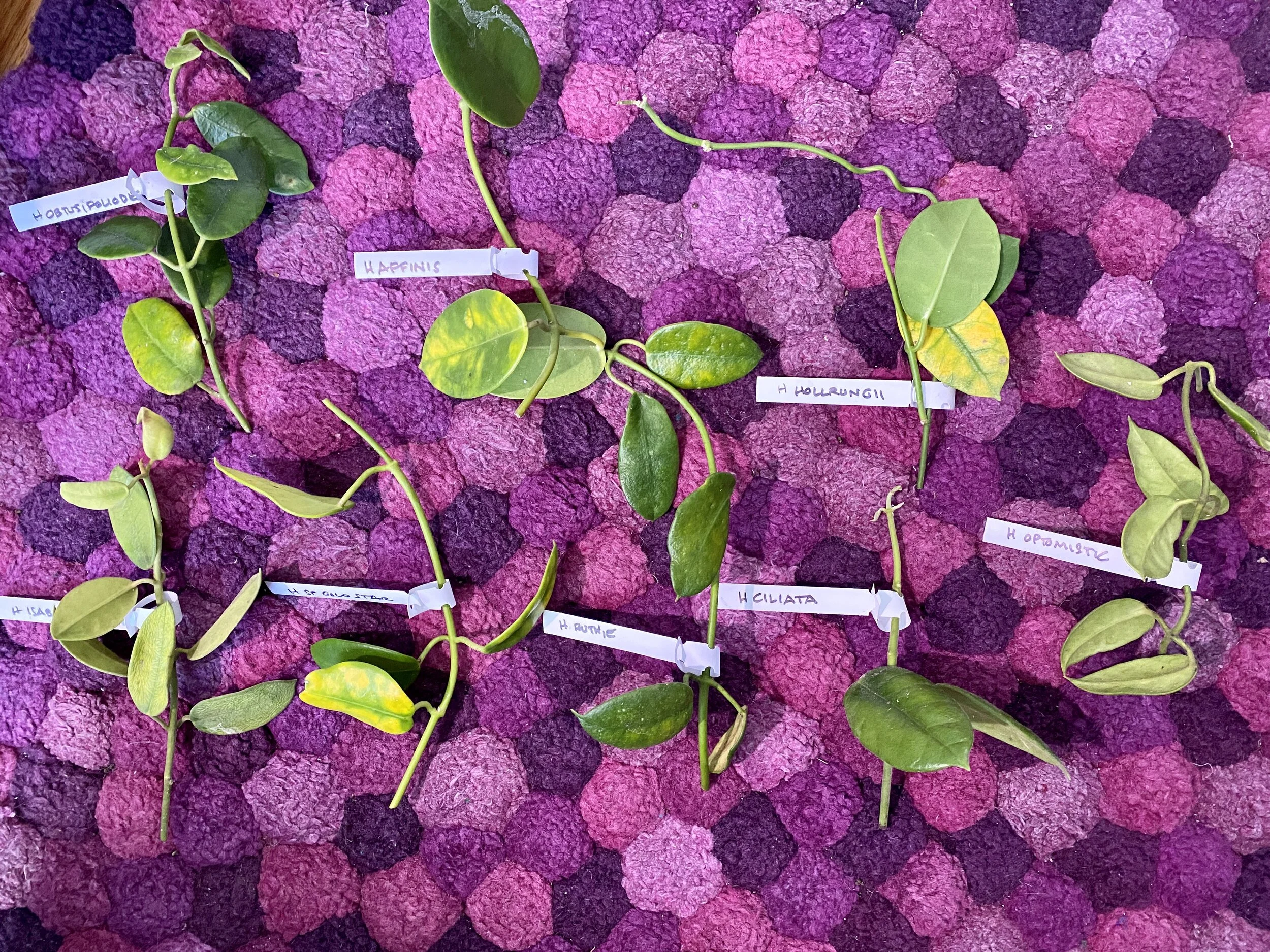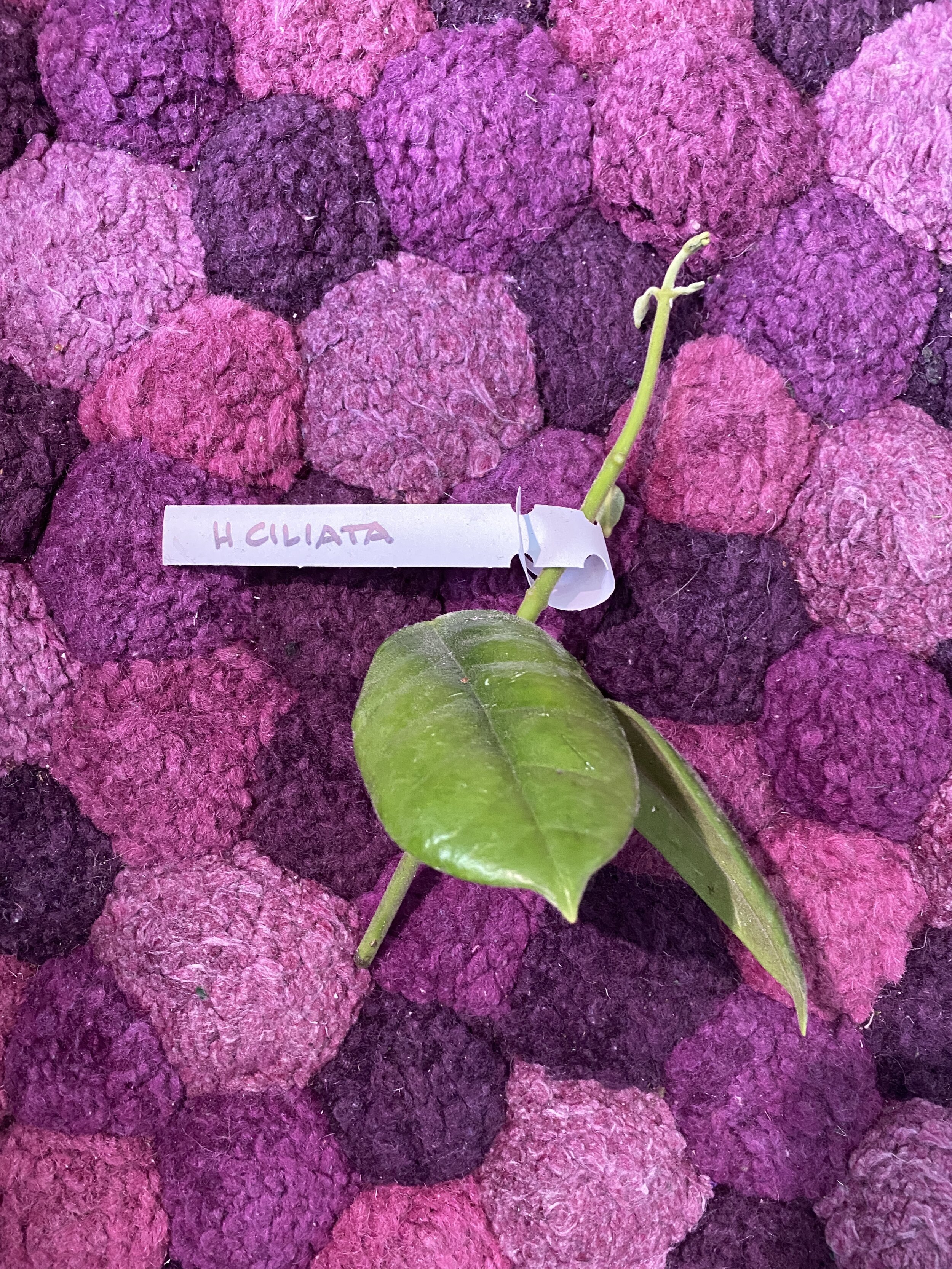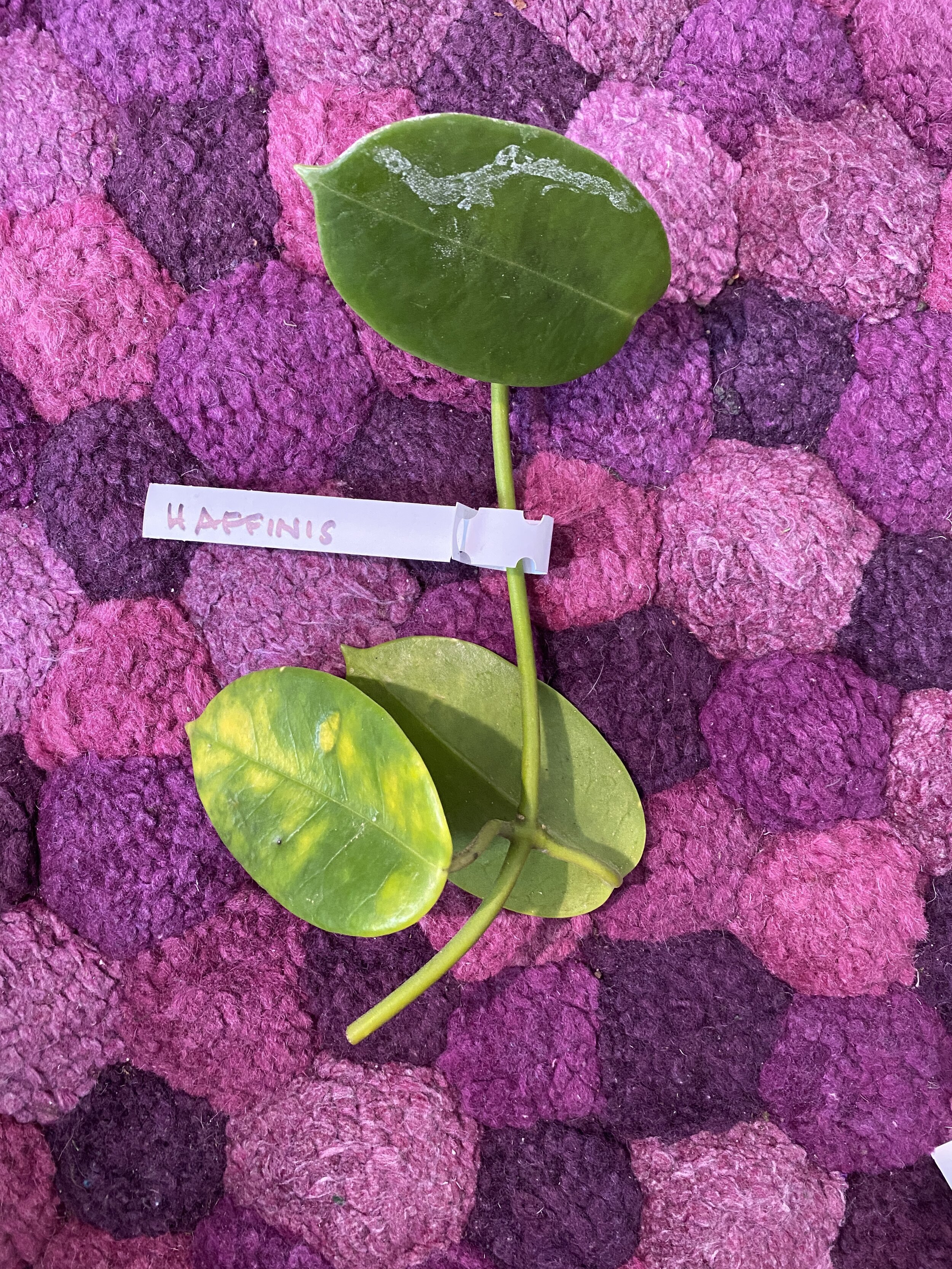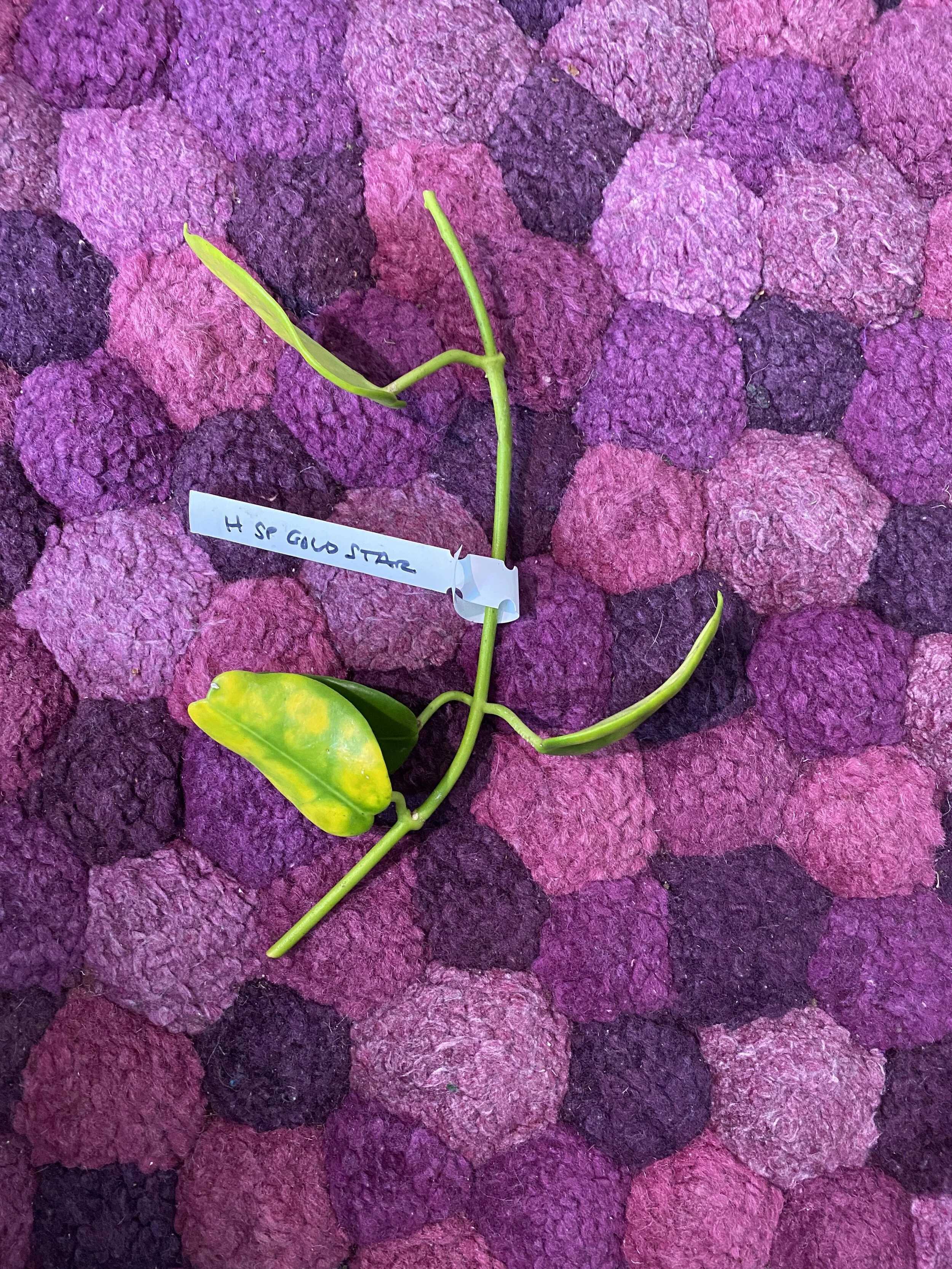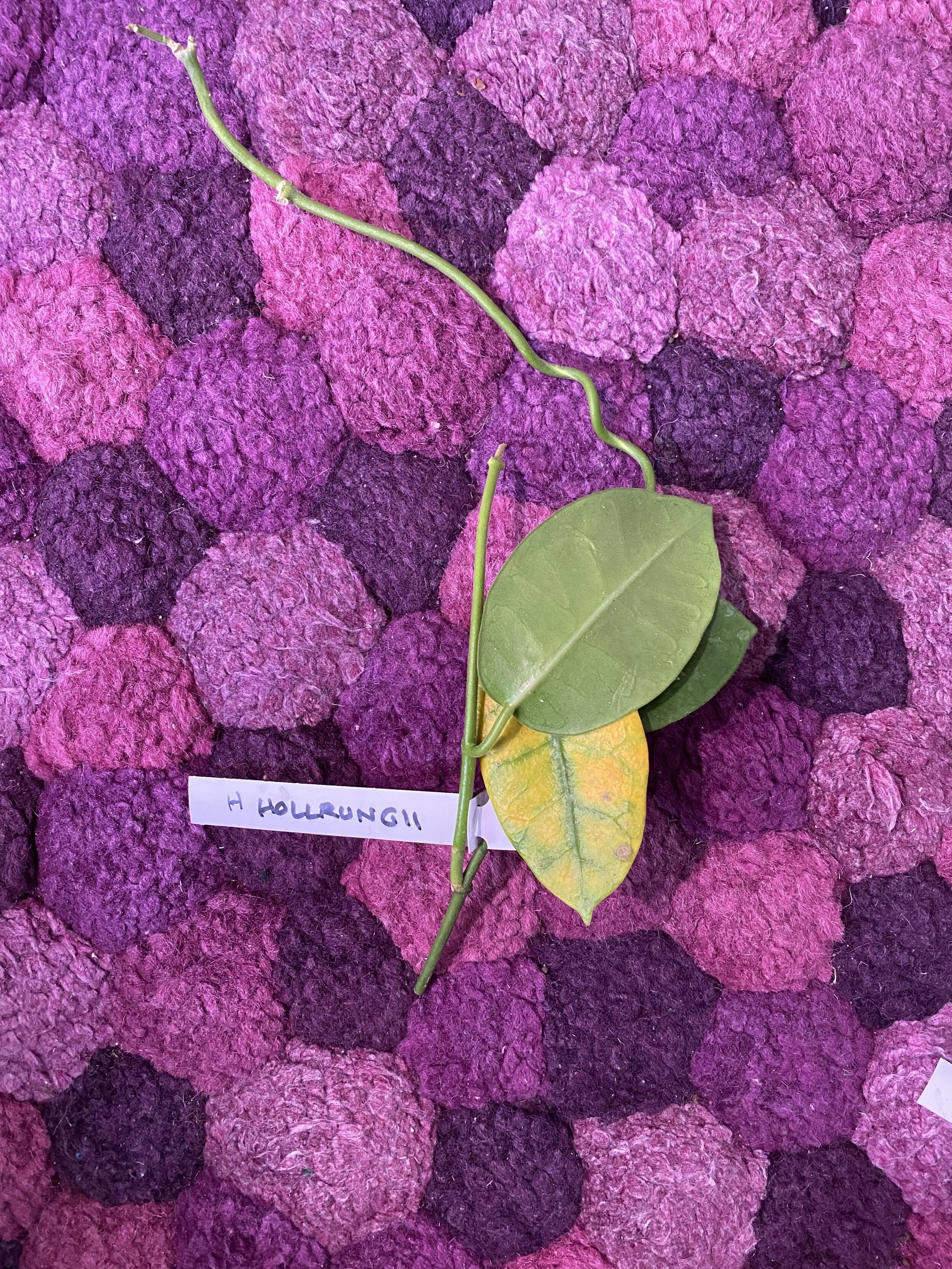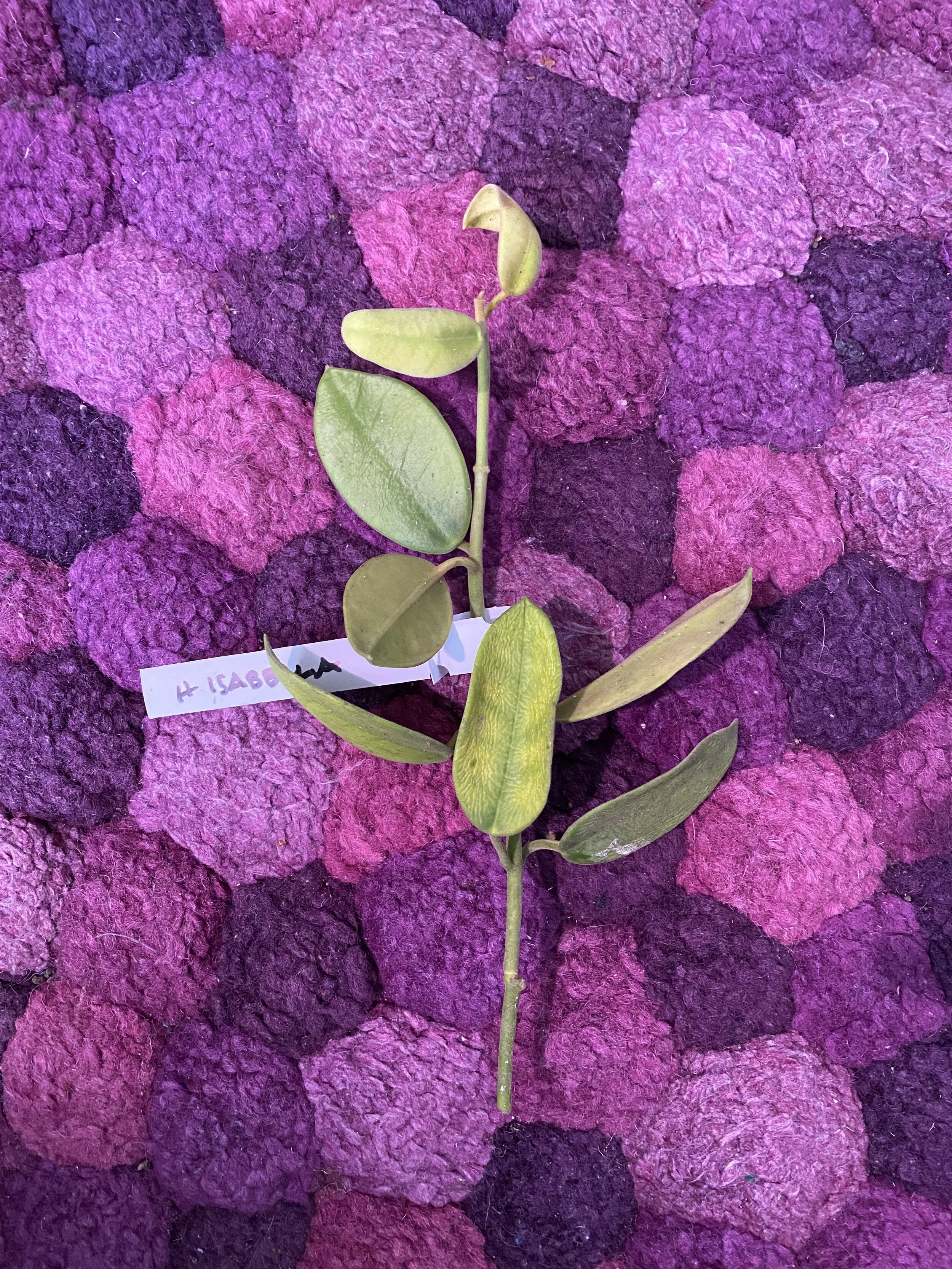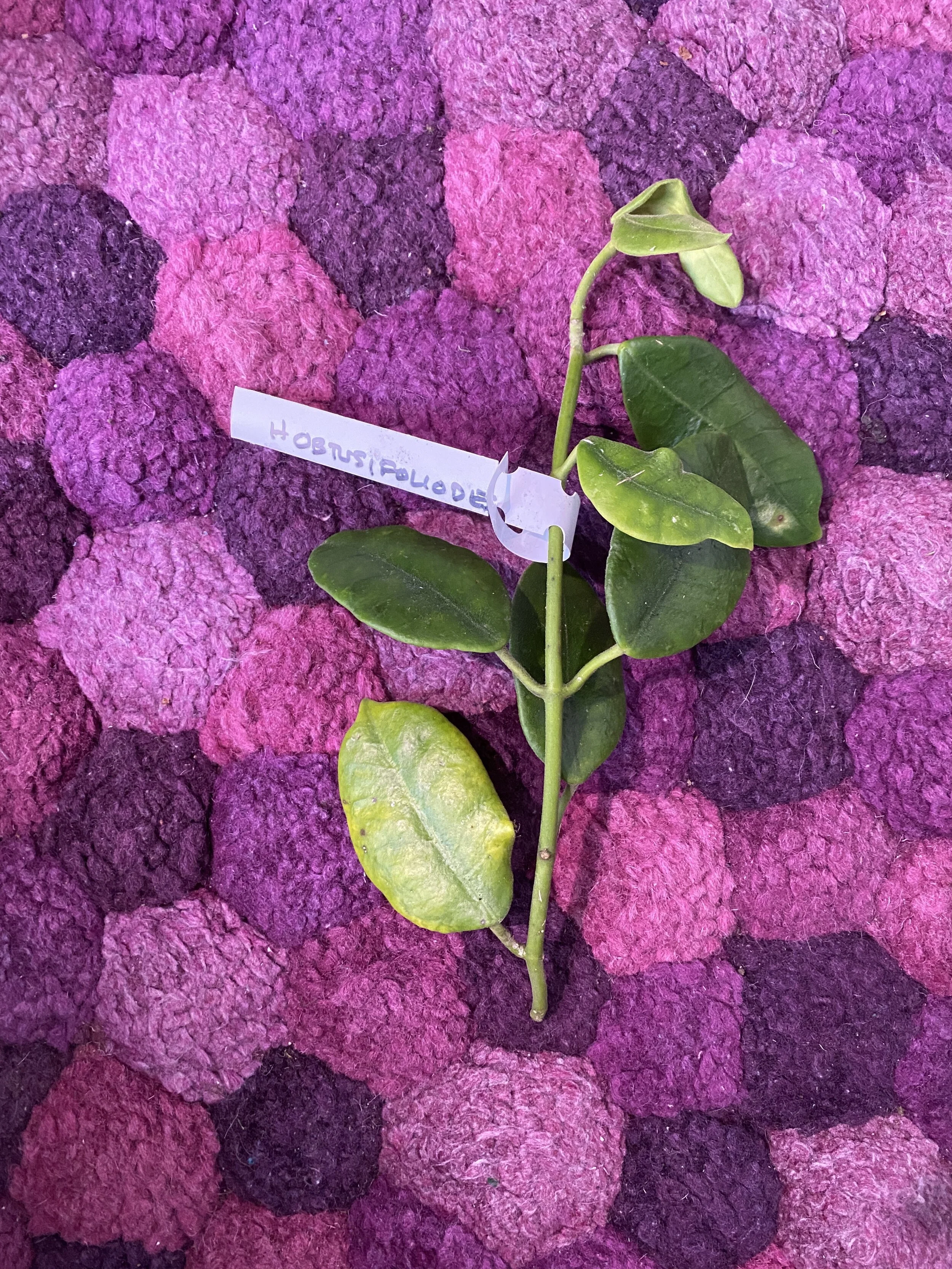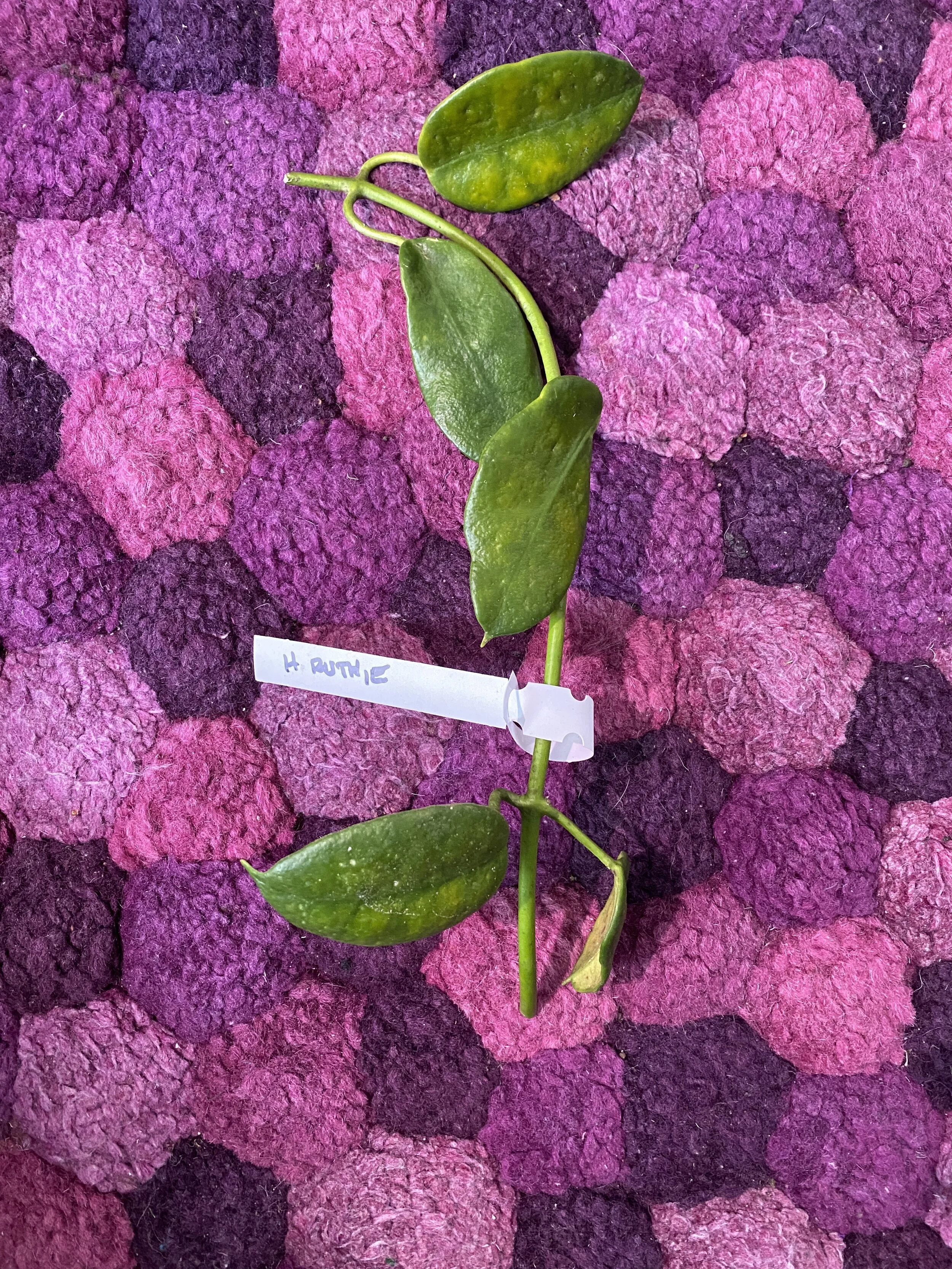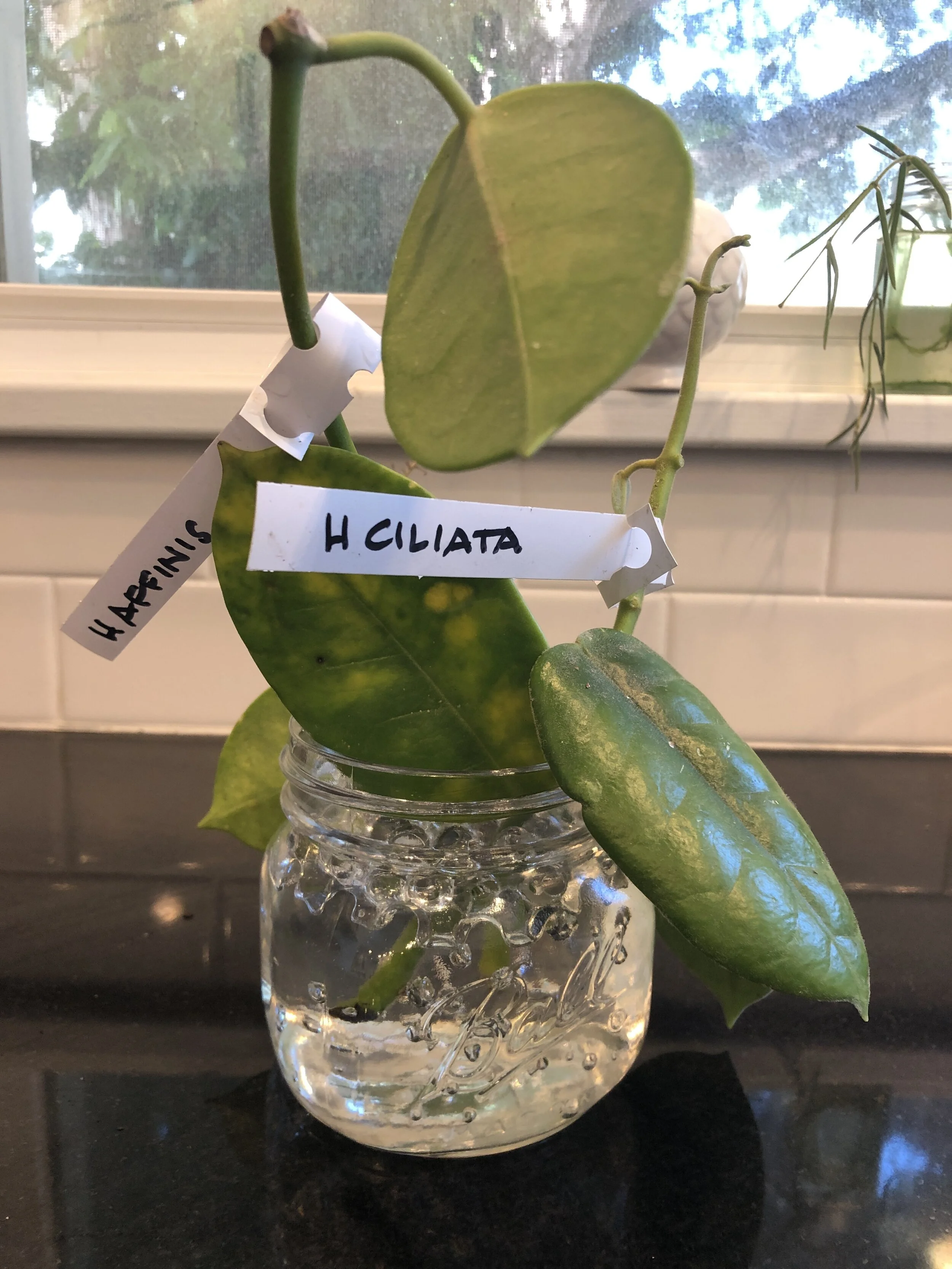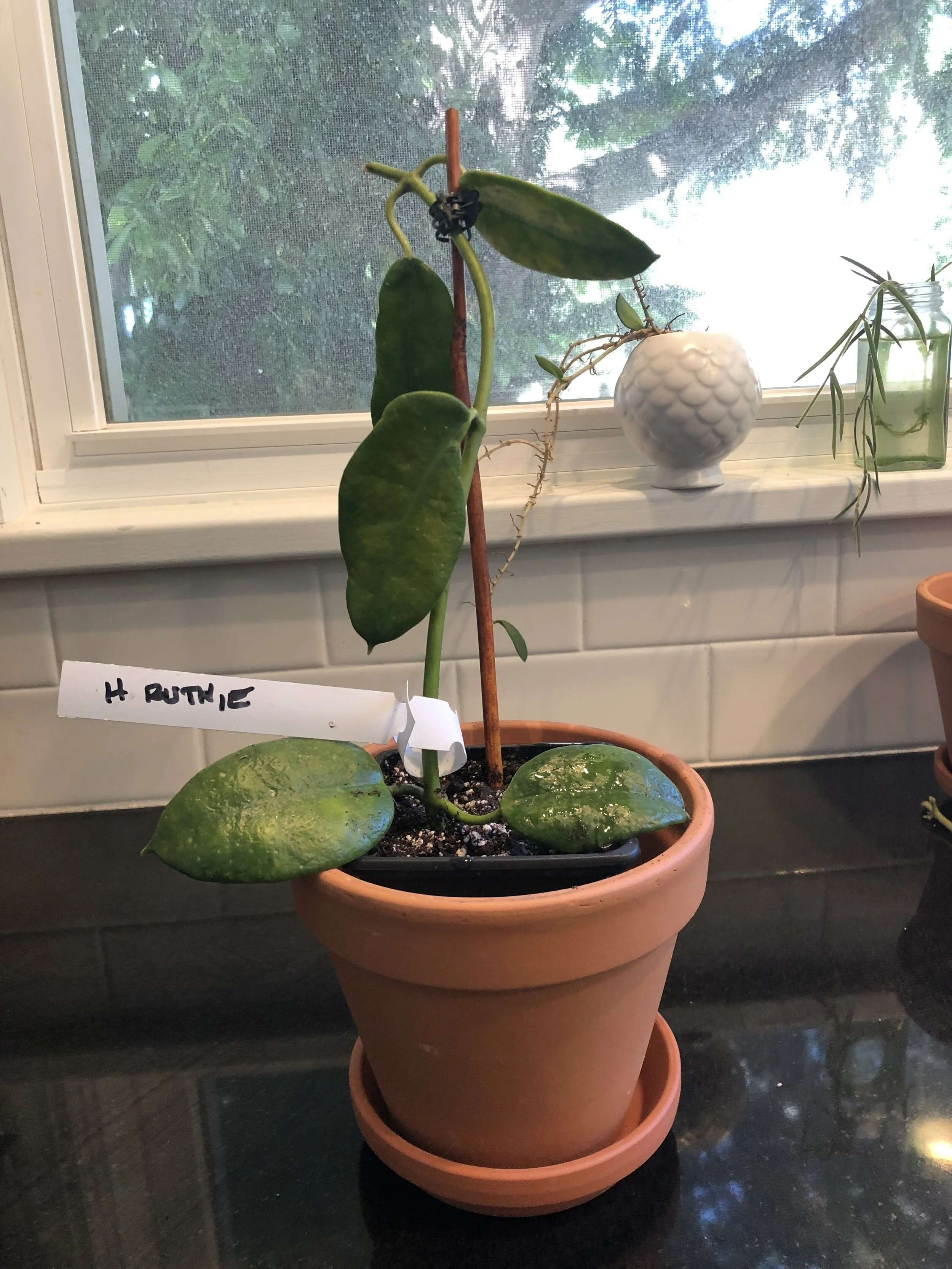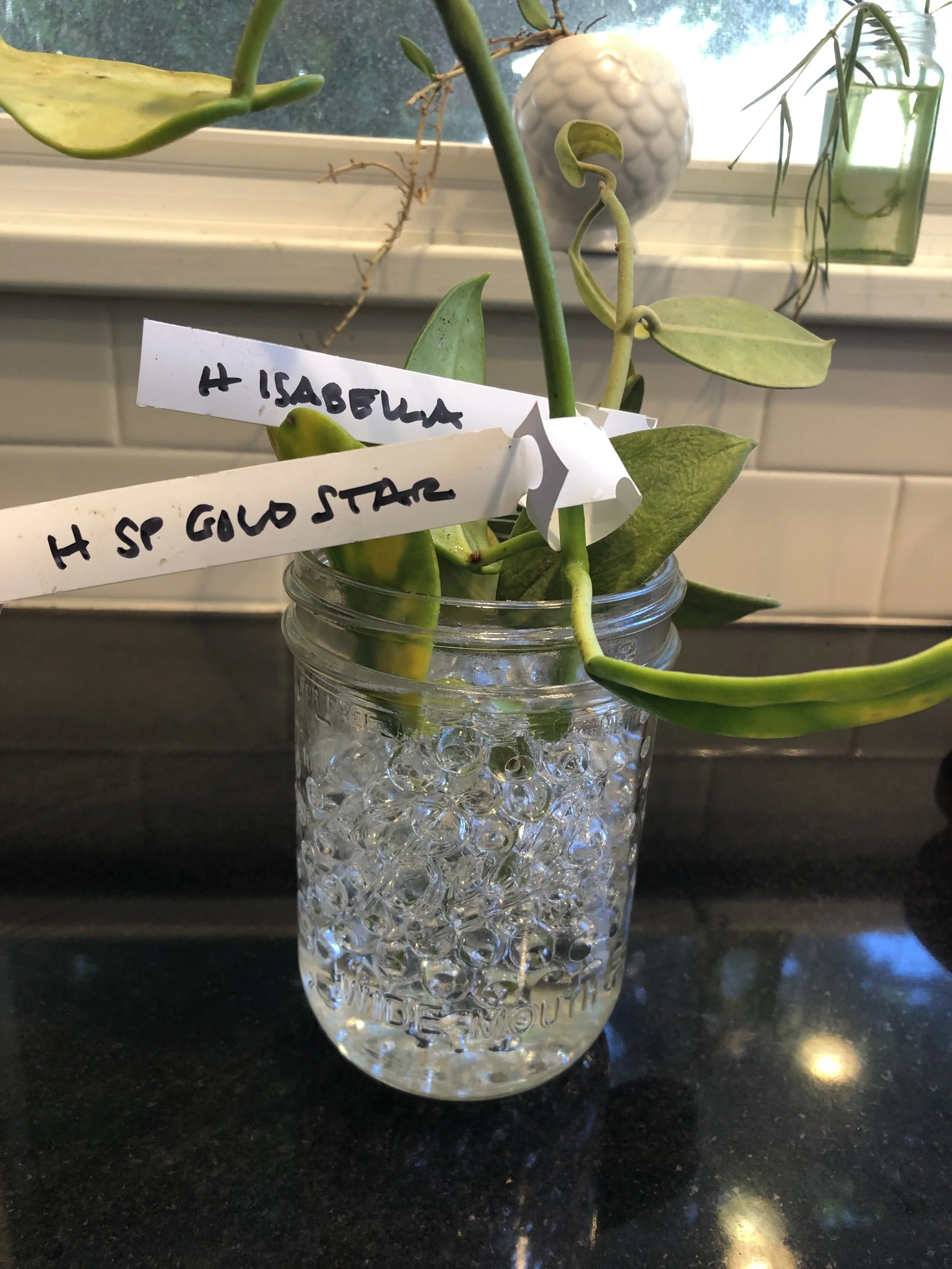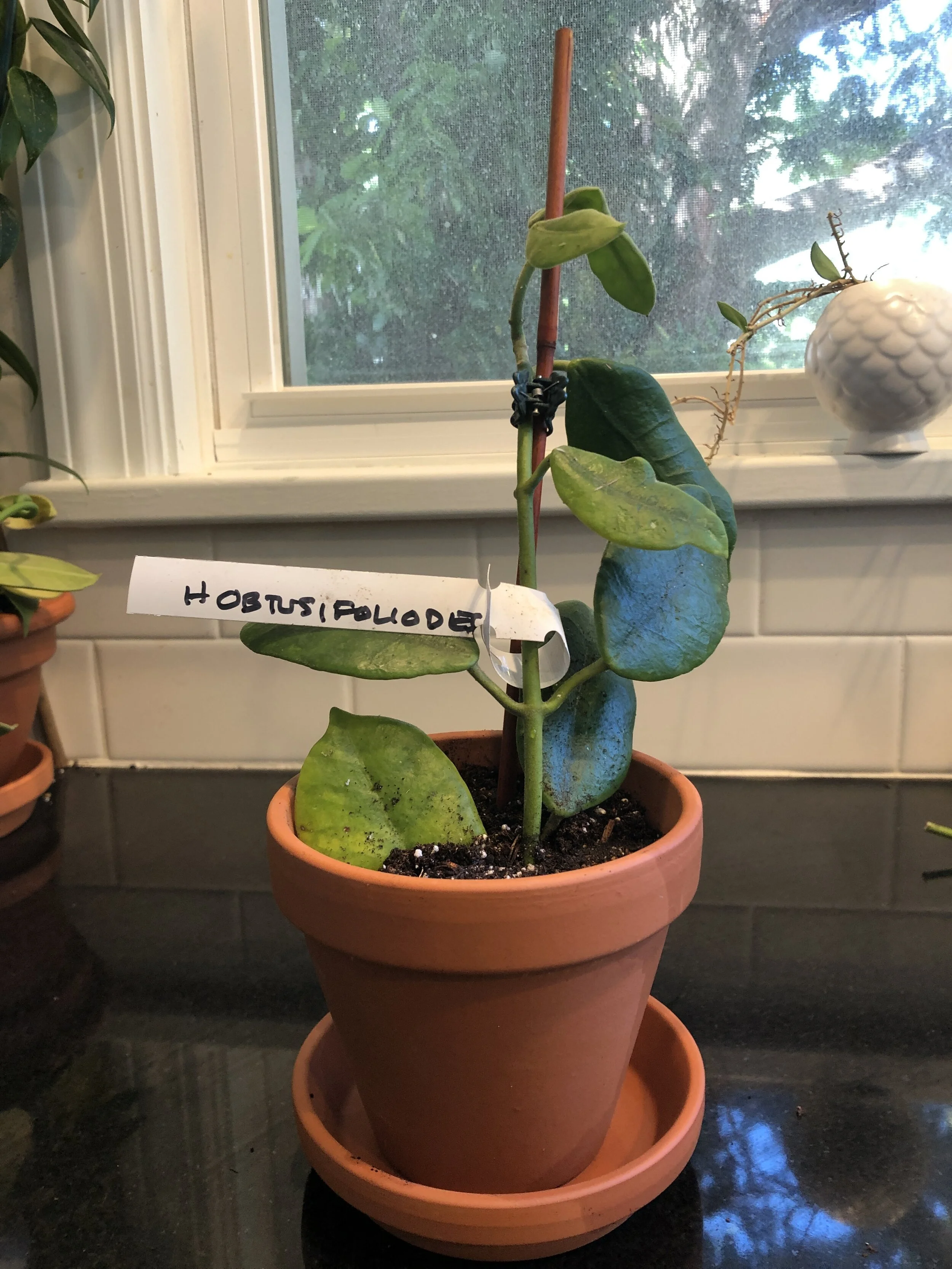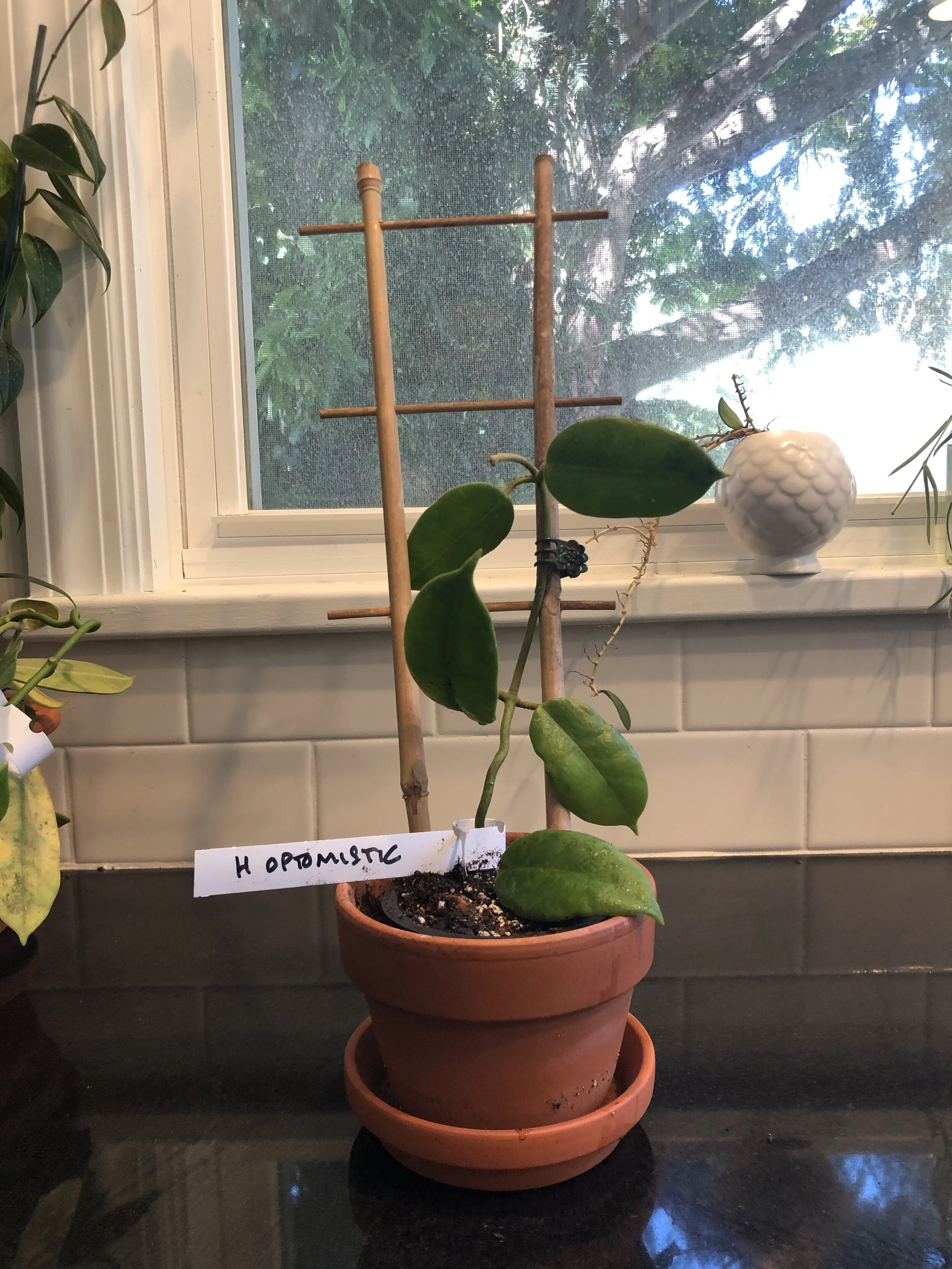Eriostemmas from Rare-Hoyas.com
I have lurked on the rare-hoyas.com webpage for ages. I always wanted to place an order, but I never did it for some reason. I find it a little daunting to order cuttings - rooted plants just feels safer to me. However, I have become more and more bewitched by Eriostemma, and I’ve found that they can be quite hard to find, especially when I have a particular plant in mind. For example, I’ve been able to locate Ciliata easily and with regularity, but Ariadna has been elusive. The only plant I have seen available is the one I inevitably purchased. Also, the prices seem to vary wildly depending on the time of year. I know shipping in the winter is a risk, especially for plants I’ve been coveting, so I waited until May to order the Eriostemma bundle from rare-hoyas.com. The process was very easy. I just sent an email requesting the bundle, and Ted replied promptly to let me know the bundle was available for order. He advised waiting a spell before shipping, as the USPS has been so overloaded due to the pandemic. Unfortunately, holding off on shipping didn’t make much of a difference. My plants were still in the mail for a little over two weeks. Here are the plants I received.
I’m really happy with these cuttings, especially considering how long they were in transit. Some are a little worse for the wear than others. Isabella and Hollrungii are going to need some rehab if they’re going to make it. There are some yellow leaves on others, but like I said, these guys came from Hawaii and spent a couple of weeks in the mail, so I’m happy to see signs of life. Now I just need to figure out how to help them thrive. There are a few plants I’m looking forward to researching due to my lack of familiarity with them. “Sp. Gold Star” is one I am eager to learn about, as well as “Optimistic.” I’m hoping “Isabella” makes it so I can learn more about her as well.
I asked Dorothy Green how I can root these plants, and she advised 50% perlite and 50% potting soil, very loose around the cutting. She also mentioned that sometimes she gets the best roots from putting the plants in water. I found it very interesting (and true!) that she said sometimes she thinks certain medium works for a particular plant and not another. I decided, based on our conversation, to try a mixture of cuttings potted in 50% perlite and 50% potting soil with a few spoonfuls of earthworm castings. The earthworm casting were my addition, so I’m hoping that turns out to be a positive rather than harmful. Also, I chose, as an experiment, to place some cuttings in gel water beads. I wanted to keep it all basic, cuttings in soil and perlite, but I couldn’t cast aside my own experience with rooting Hoya Linearis in water. It has been very successful for me, and although there are marked differences between H. Linearis and these Eriostemma, I just had a feeling that I should give it a try. I thought better of the Ciliata in gel water beads since I later recalled Dorothy saying that she finds Ciliata to be easily rooted in soil. I’ll be moving it to a pot with soil soon.
My end goal with Affinis, Ciliata, and Ruthie is to root the plants and add them to my existing pots of each of those species. I’d like to have multiple vines of those species, and I’m really hoping for success with these cuttings so I can reach that goal.
I’ll say again that I’m very happy that I made this purchase and I will hopefully be purchasing from rare-hoyas.com again soon.
To see the rest of my Eriostemma, you can visit here.
You can check out the one month progress on these plants soon!

